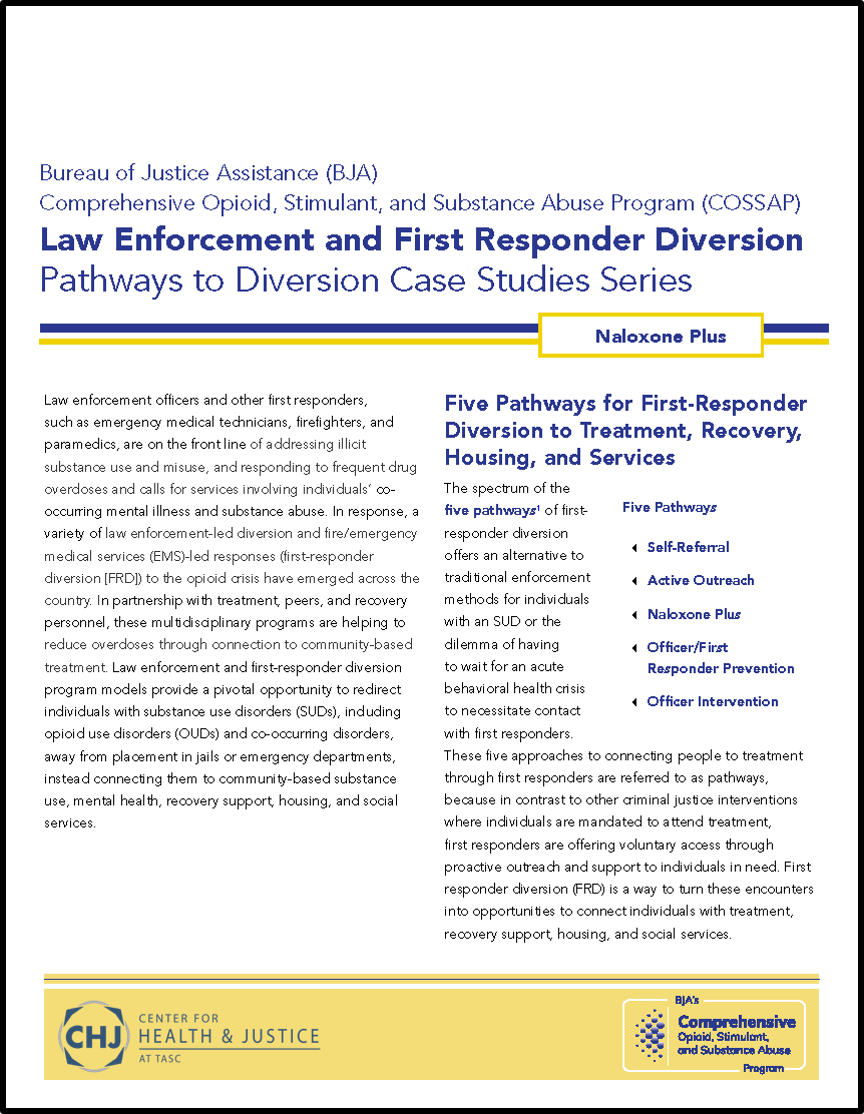
This article describes the features of one (“Naloxone Plus”) of the five pathways proposed by the Bureau of Justice Assistance’s (BJA’s) Comprehensive Opioid, Stimulant, and Substance Abuse Program (COSSAP) for first responders, such as law enforcement officers and fire/emergency medical personnel, to use in diverting from jail and/or criminal justice processing to treatment services persons for whom they have administered naloxone to reverse the effects of an opioid overdose.
If these individuals are not subsequently and quickly linked to treatment, recovery support, and other needed resources, they are at high risk of experiencing another potentially fatal drug overdose. The use of the Naloxone Plus protocol in such cases features the connection of these individuals to treatment and follow-up services after the administration of naloxone by first responders in emergency cases in which a potentially fatal opioid overdose is suspected. The Naloxone Plus protocol involves linking the victim to a multidisciplinary team capable of diagnosing and treating persons who abuse opioids. Engagement with this team typically occurs within 24 to 48 hours after the first responders’ crisis response. The outreach team may include a combination of law enforcement officers, emergency medical professionals, a recovery coach, and a clinical social worker or psychologist. The team’s goal is to motivate the individual to engage in treatment services. Once the individual is in treatment, the outreach team may periodically check on the individual and provide information on various service options. This article outlines the 10 critical elements of the Naloxone Plus protocol.
